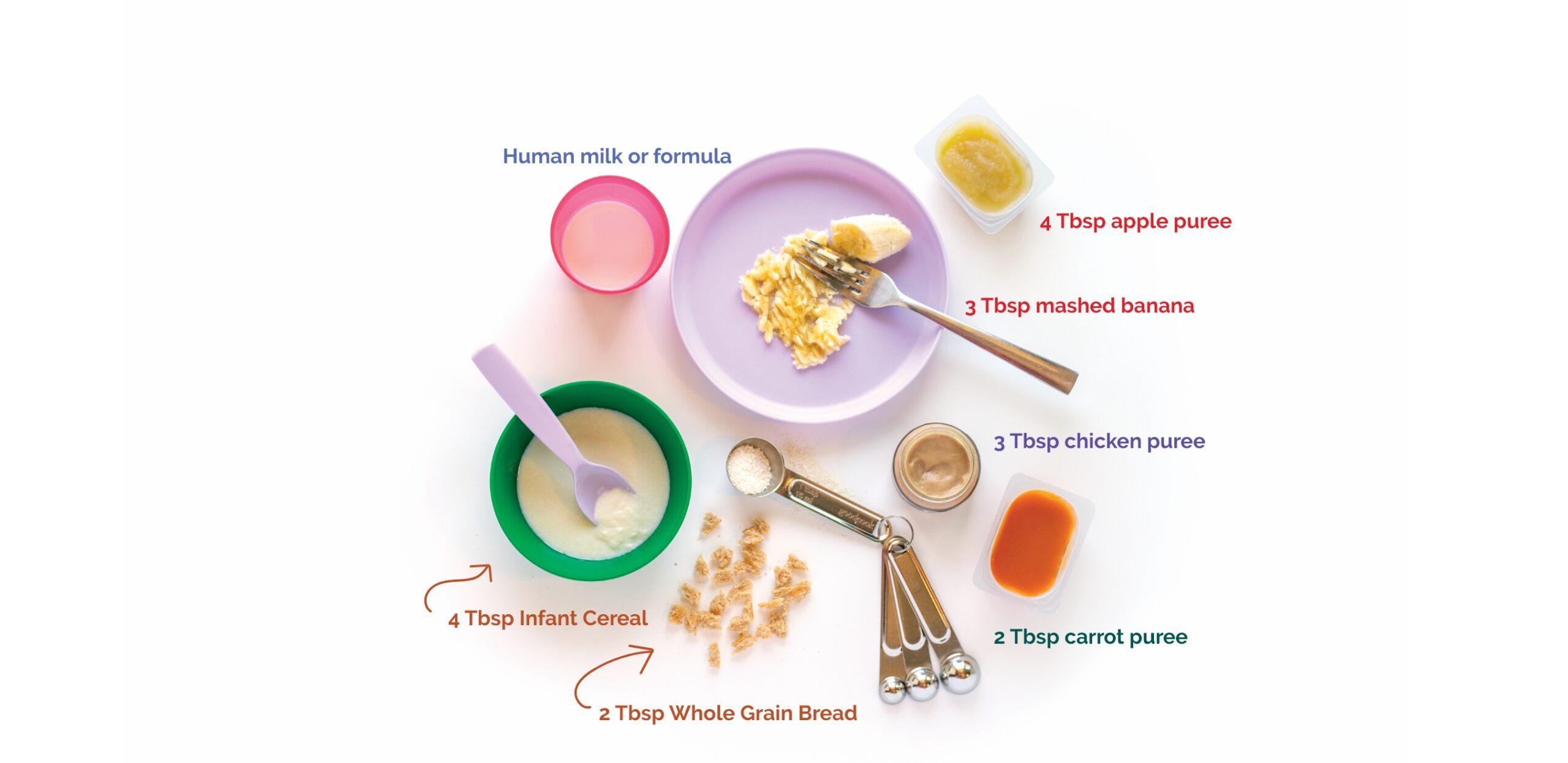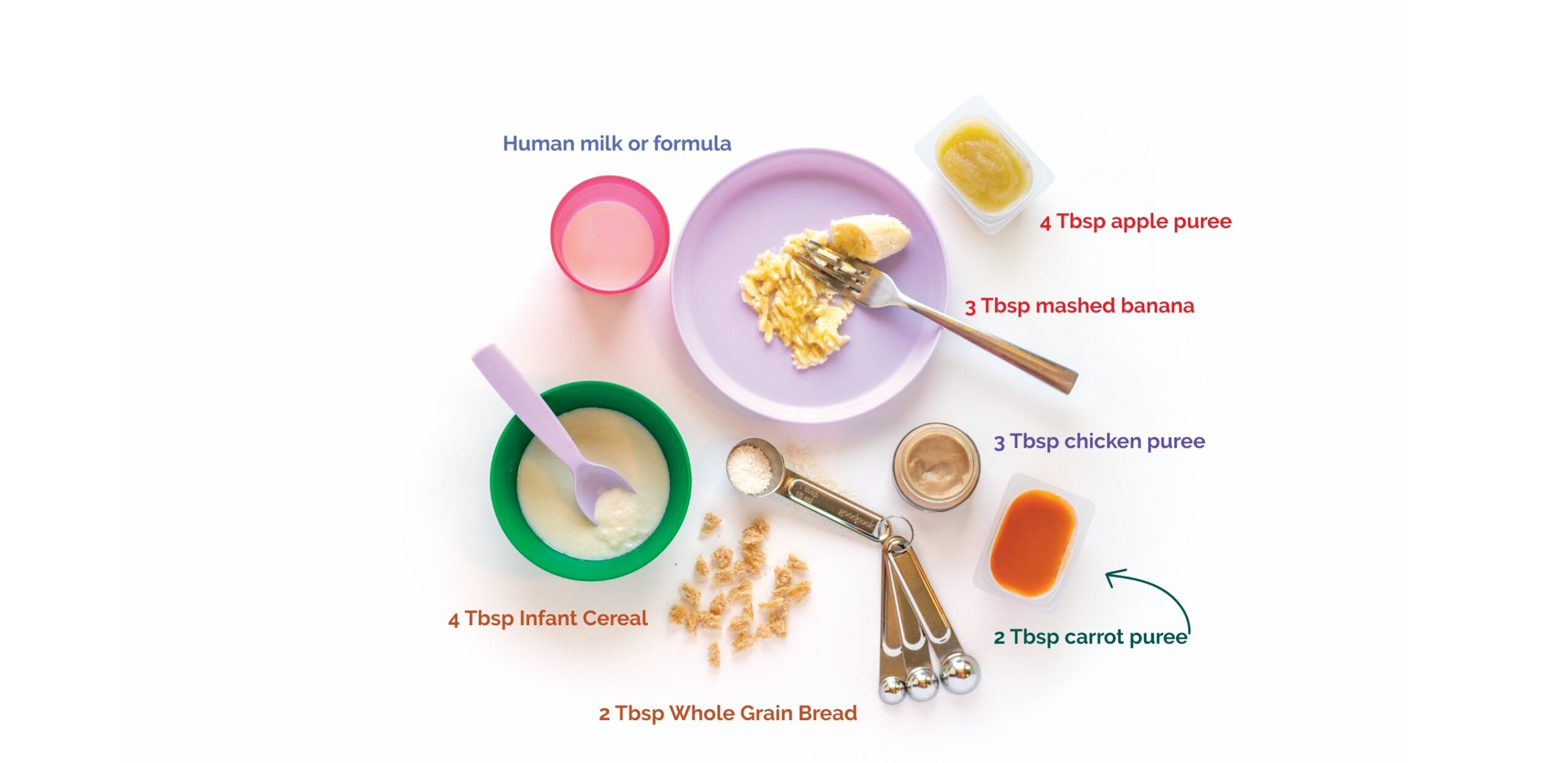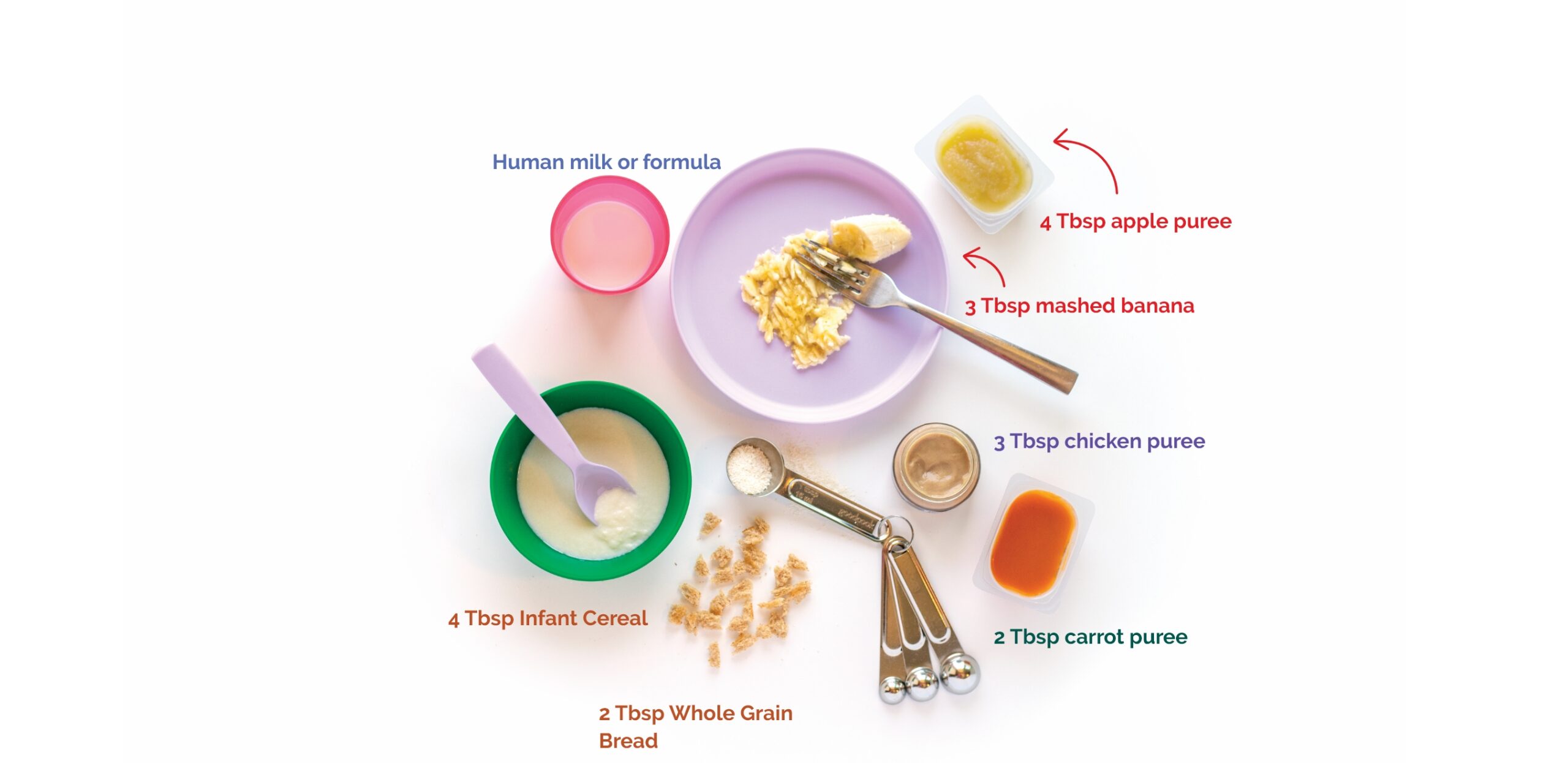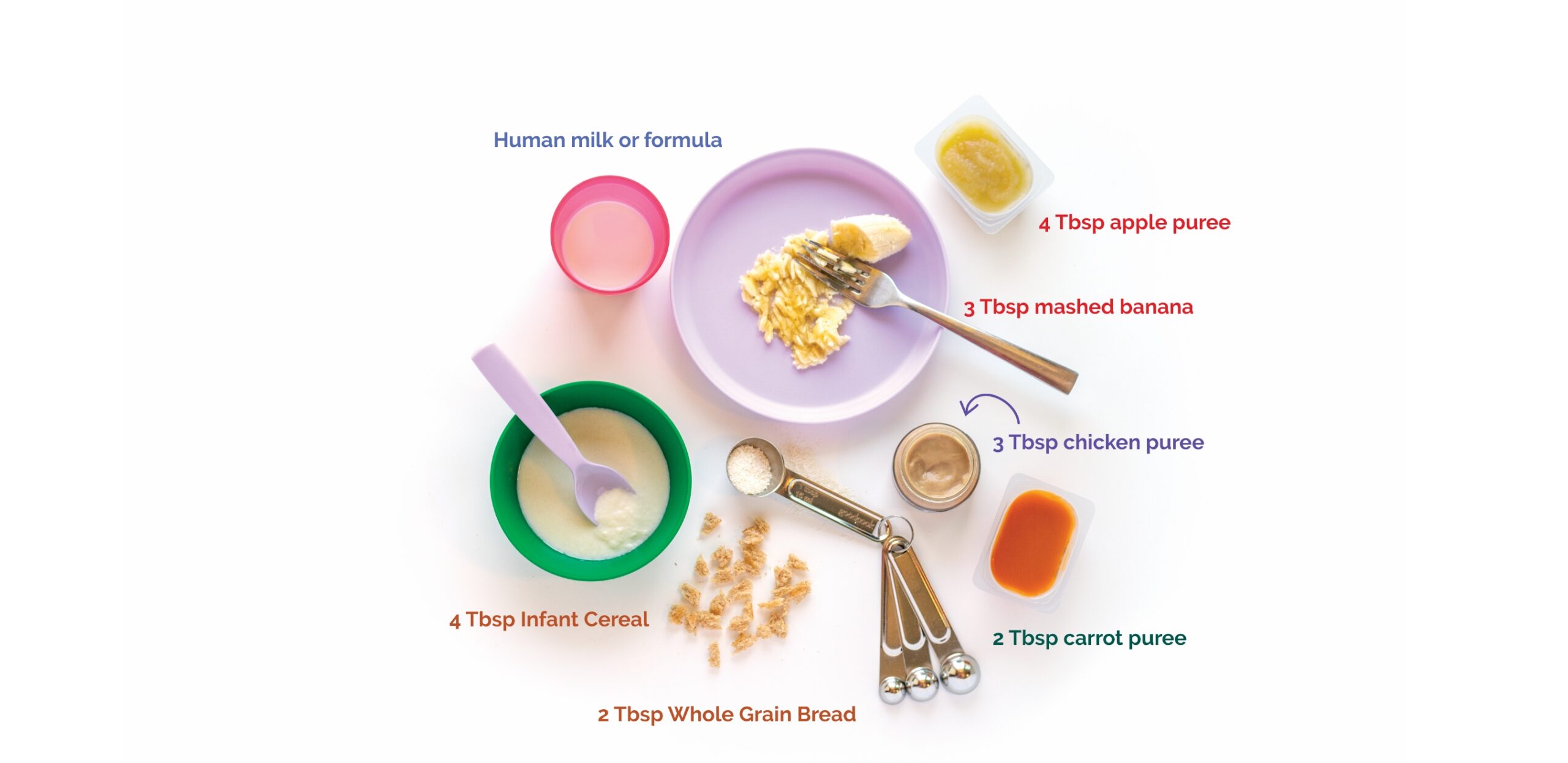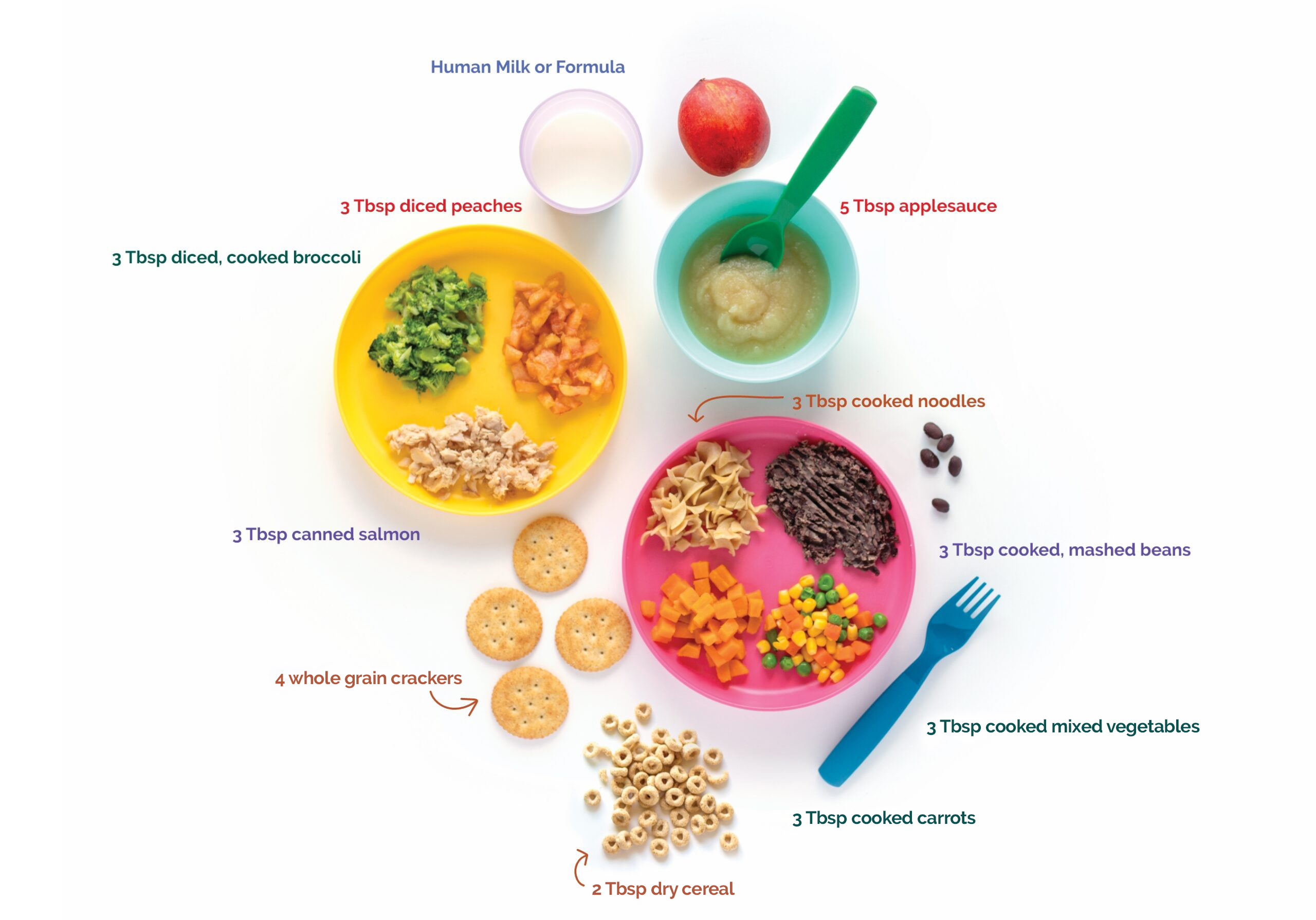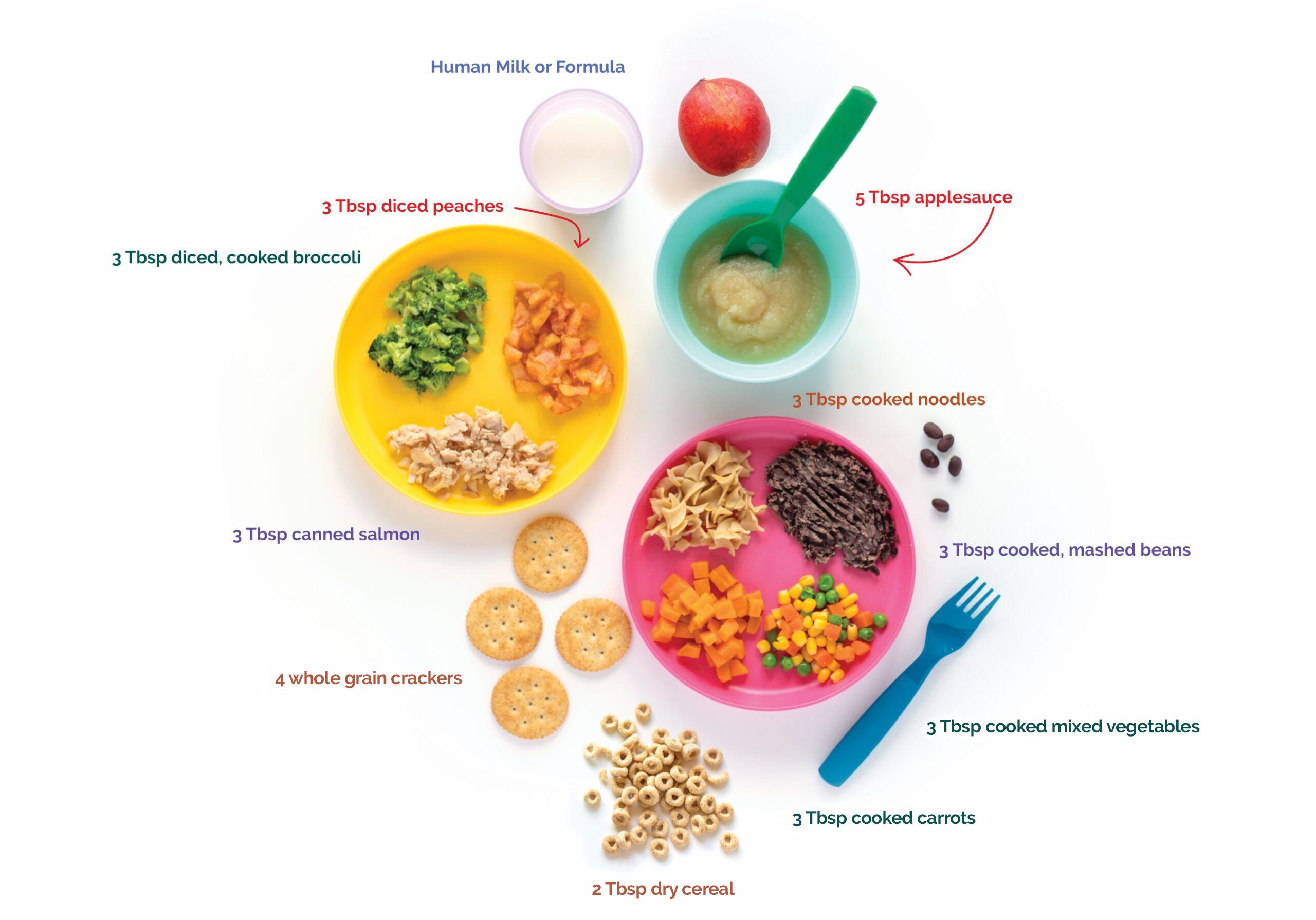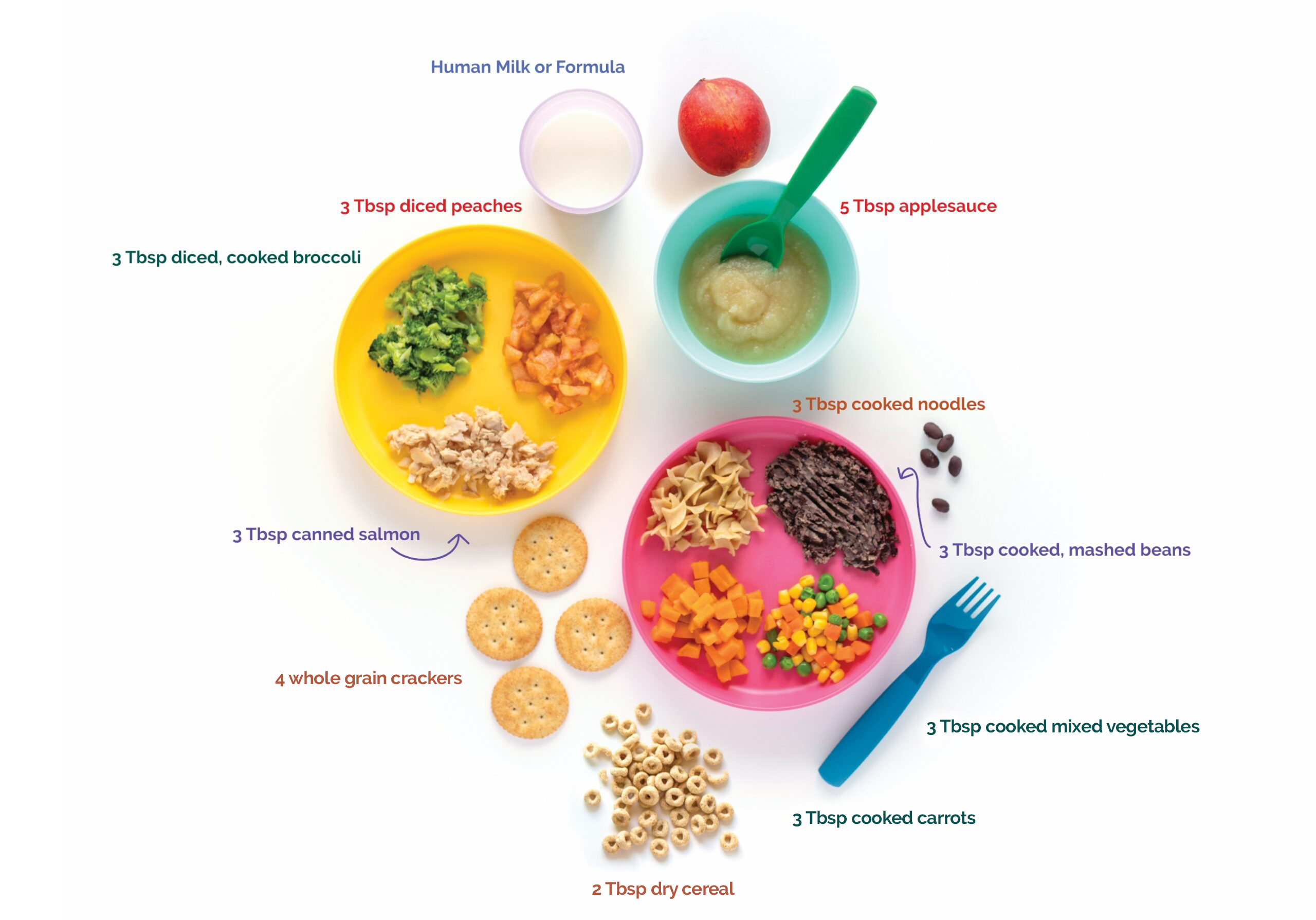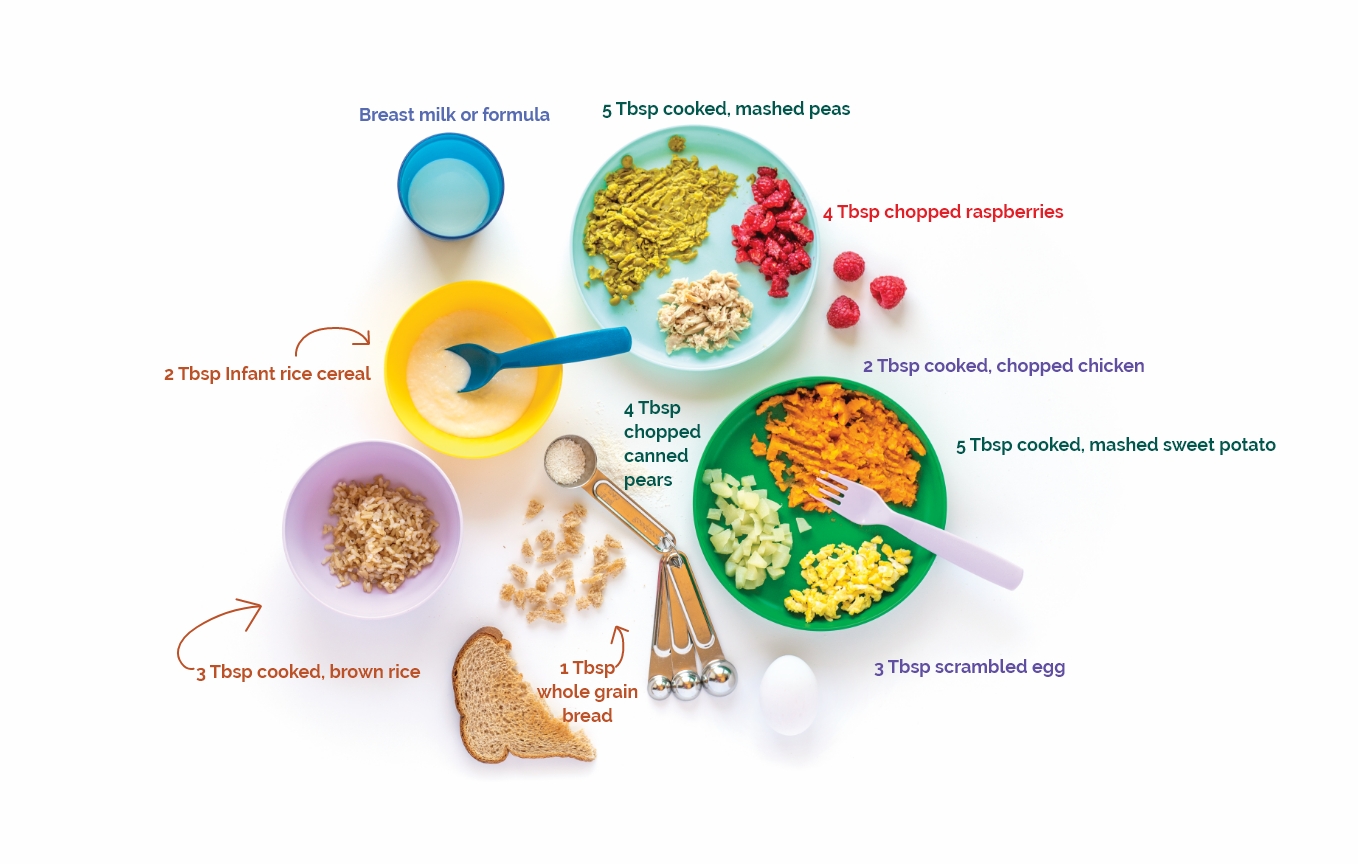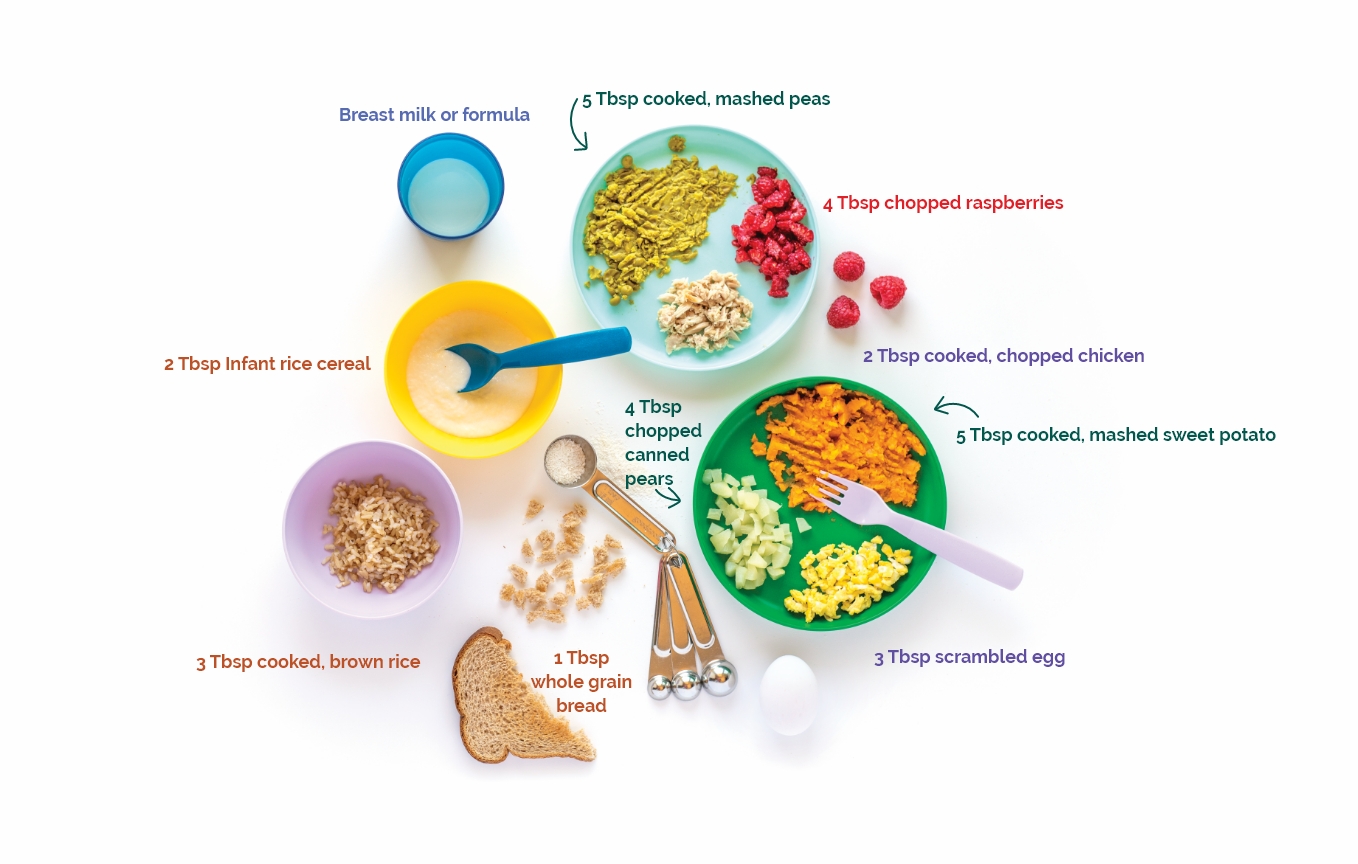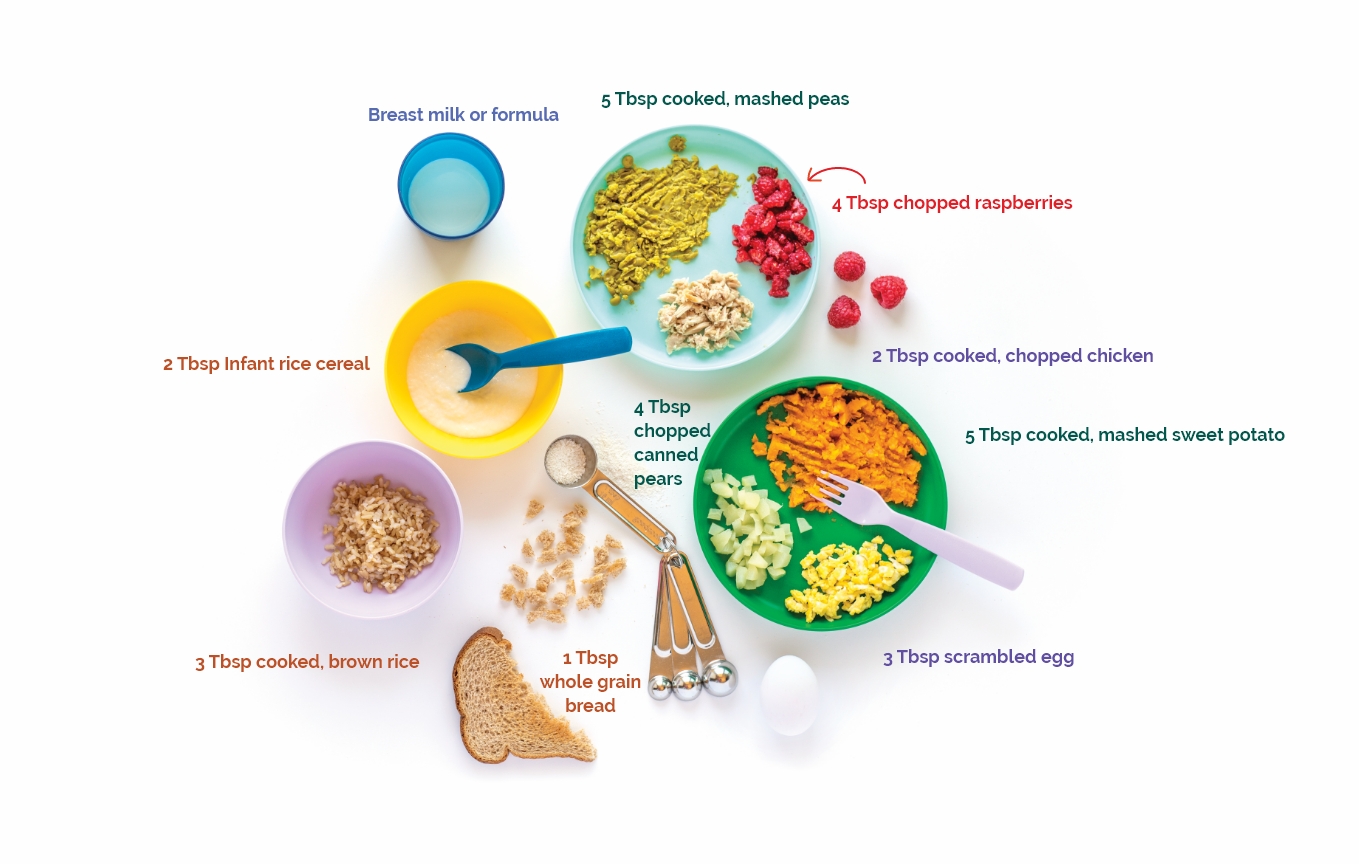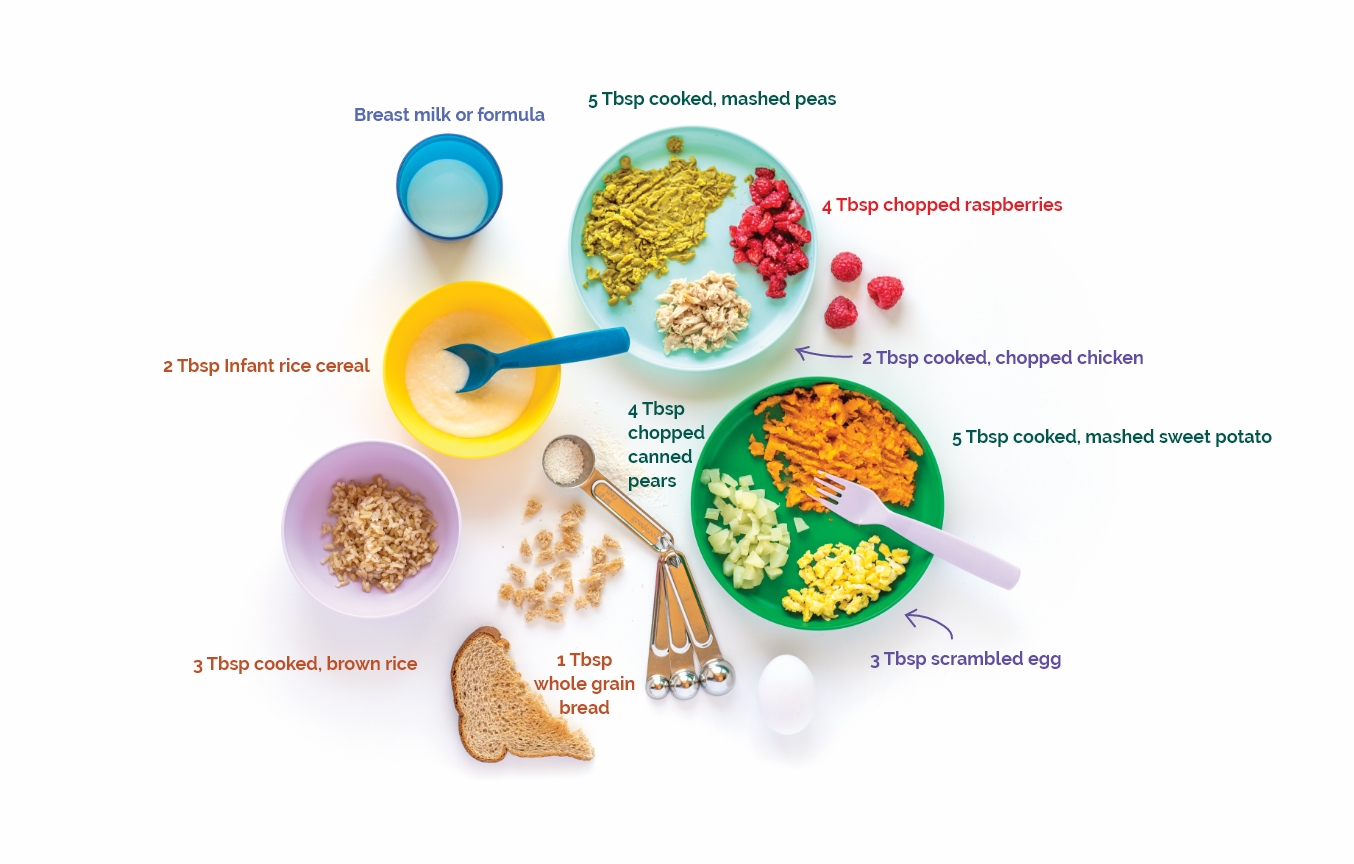I am 4 and want to do more!

I am becoming MORE CONFIDENT.
I like to try new things. You are my teacher. I try to do what you do, so eat healthy foods and I will too.
- I can peel foods using my fingers. Let me practice shucking corn or peeling a banana, an orange, or a hard-boiled egg.
- I can roll food into a ball. I can roll dough into balls or make meatballs or cheeseballs.
- I can use a hand juicer. Put a wet cloth under the juicer to stop it from slipping and show me how to juice halves of grapefruit, oranges, lemons, or limes.
- I can crack the shell of raw eggs. After some practice, I can crack the eggs needed to make scrambled eggs, omelets, or for use in recipes.
- I can mash foods. I can use a fork or potato masher to mash bananas, cooked potatoes, or cooked beans.
more! Show me how to
measure ingredients.
This helps me learn math.
Here are some examples of what meal and snack portion sizes might look like on my plate.
Breakfast
½ cup large, sliced strawberries
1 cup low-fat milk
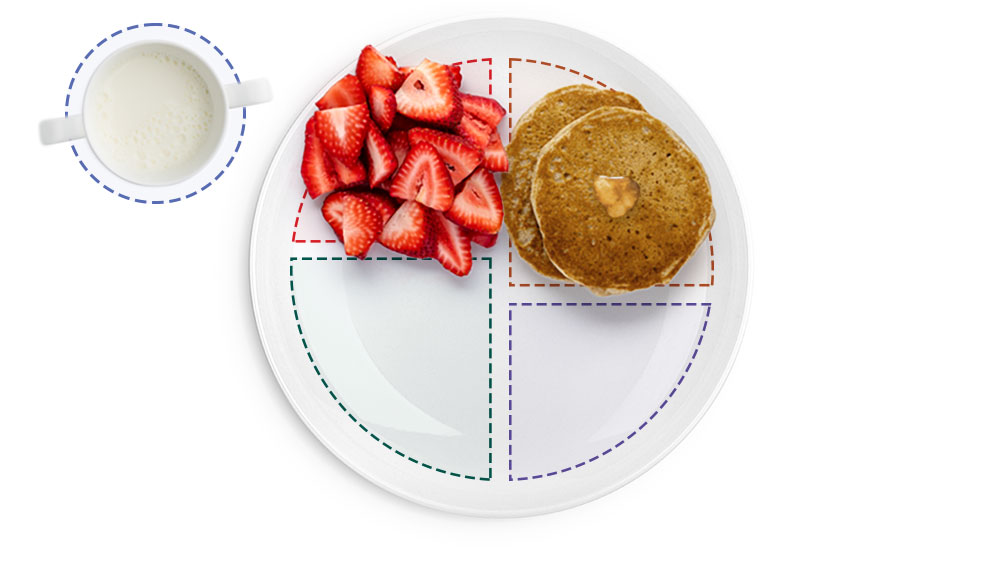
2 small whole grain pancakes with 1 tablespoon syrup
Lunch
½ cup sliced in half grapes
½ cup sliced, baked sweet potato sticks

1 small whole grain bun
with small burger
1 cup low-fat milk
Snacks
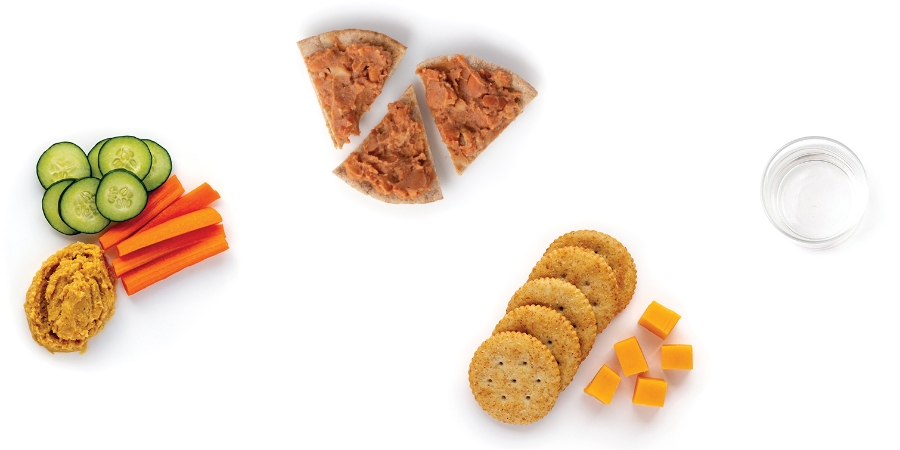
½ cup sliced cucumbers and carrots
with ¼ cup hummus
½ medium whole grain tortilla bread wedges, toasted
with ¼ cup mashed refried beans
4 to 6 whole grain crackers
with 4 or 5 cubes cheese
water between meals and snacks
Dinner
½ cup baked, sliced apple
½ cup water

1 cup shredded lettuce
on 1 medium corn tortilla
with 1½ ounces cooked, lean ground beef
with ½ cup shredded cheese
Daily suggested food group amounts
FRUITS
3 servings a day – 1 ½ cups total
1 serving = ½ cup
Cooked or soft, raw fruit.
Mashed, sliced, or chopped.
Many kinds and colors: red, yellow, orange, blue, and green.
VEGETABLES
3 servings a day – 1 ½ cups total
1 serving = ½ cup
Raw or cooked, mashed, sliced, or chopped veggies.
Many kinds and colors: dark green, orange, red, yellow, and purple.
GRAINS
8-10 servings a day – 4-5 ounces total
1 serving = ½ ounce
Whole grain bread, tortillas, rice, or noodles.
Dry or cooked cereal.
PROTEINS
3-5 servings a day – 3-5 ounces total
1 serving = 1 ounce
Cooked lean meat, poultry, or seafood.
Eggs.
Cooked beans, peas, or tofu.
Peanut butter.
DAIRY
5-6 servings a day – 2 ½ cups total
1 serving = ½ cup
Low-fat or fat free milk.
Yogurt.
Cheese.
Look what I can do!
I learn a lot from being with you and being active. Let’s be active as a family! We can:
- Play a game of tag
- Cook meals together
- Grow a garden at home or in the community
- Run
- Hop
- Swing
- Throw and kick balls
- Go on a walk through the neighborhood
Keep me safe and healthy
Take me to the doctor for my check-up.
I can brush my own teeth now, but watch me when I do so I don’t miss any teeth.
Remind me to wash my hands often. Washing my hands helps me stay healthy. I should wash them with warm water and soap for 20 seconds.
I need simple rules. Set limits on when, where, and how often we have screen time. Talk about what I’m learning as we watch together and keep me safe from what I shouldn’t see. Let’s focus on each other during meals and snacks, not a screen.
